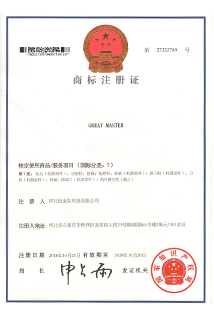stick welding electrodes
Understanding Stick Welding Electrodes
Stick welding, also known as Shielded Metal Arc Welding (SMAW), is one of the oldest and most widely used welding processes. This technique employs a consumable electrode coated in flux to create the weld. The selection of the right stick welding electrode is crucial for achieving strong and durable welds.
Understanding Stick Welding Electrodes
Electrodes are classified based on their characteristics, including the coating, tensile strength, and the type of current they are compatible with. The first digit of the electrode classification indicates the minimum tensile strength of the weld metal in thousands of psi. For example, an E7018 electrode has a minimum tensile strength of 70,000 psi. The second digit signifies the welding position; the number '1' means it can be used in all positions, while '2' restricts it to flat and horizontal positions.
stick welding electrodes

The type of current, whether alternating current (AC) or direct current (DC), also impacts the performance of the electrode. Some electrodes are better suited for DC, providing smoother arcs and fewer defects. Choosing the right current is essential for optimal performance and weld quality.
In addition to these factors, the environment in which welding takes place can influence the selection of electrodes. For instance, E6011 electrodes can be used for welding on dirty or rusty surfaces, making them ideal for outdoor or maintenance welding. Conversely, low hydrogen electrodes like E7018 are preferred in controlled environments to ensure the integrity of the weld.
Welders must also be mindful of the electrode diameter, as it affects the weld bead size and penetration. Common diameters include 1/16”, 3/32”, and 1/8”, each suited for specific thicknesses of the base material. A larger diameter electrode can produce a wider weld and is typically used for thicker materials.
In conclusion, understanding stick welding electrodes is crucial for anyone involved in welding. Whether for professional use or DIY projects, selecting the right electrode can significantly affect the quality of the weld. Factors such as material type, electrode classification, current type, environmental conditions, and electrode diameter all play essential roles. By mastering these elements, welders can achieve strong, reliable welds tailored to their specific needs.
-
Best MIG Welding No Gas Flux Core Solution – Easy, Portable & Clean WeldingNewsJul.08,2025
-
7018 Welding Rod 3/16 - High Strength, Low Hydrogen Electrodes Wholesale 3/32 Welding Rod 7018 Suppliers & China 7018 AC Welding Rod FactoryNewsJul.08,2025
-
High Quality MIG Aluminium Welding Wire - Wholesale Factory Prices from China SuppliersNewsJul.07,2025
-
High-Quality Gasless Aluminum Welding Wire China Gasless Aluminum MIG Wire SupplierNewsJul.07,2025
-
High Quality Ordinary Welding Rod for Pipes – Reliable China Welding Rod 7016 SupplierNewsJul.06,2025
-
Welding Wire 0.9 mm ER70S-6 Supplier Wholesale Manufacturers & FactoriesNewsJul.06,2025


